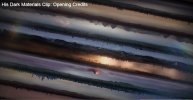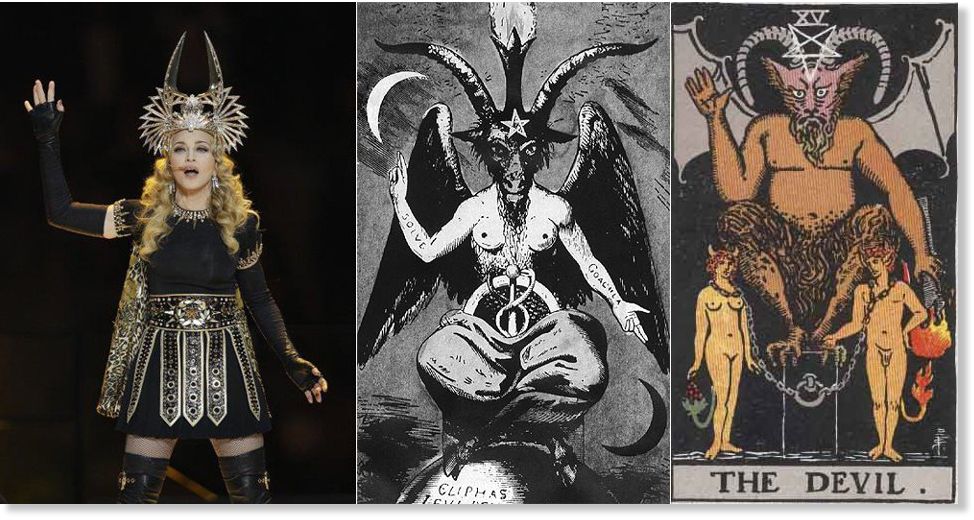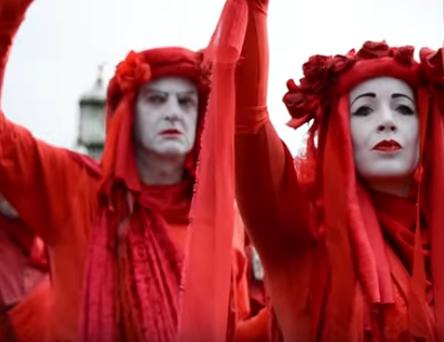Stella Marys
Jedi Master
We live in a world of identity crisis, of not knowing what we want or who we are. A world in which people move through their lives with an inner emptiness and have the belief that it can be filled with meaning with the proposals that are granted by those who do not want them to know themselves. We look for solutions on the outside and don't realize the tools we have on the inside. Symbolic thinking is an essential tool and is not given the place of relevance it deserves. It is of great importance to develop the abstraction of thought since in this way we are able to access transcendent information. Throughout the history of humanity, there are many myths, legends, poetry, stories, music, art, not only speak of aspects external to the human being, they also relate situations that draw the internal landscape of people and are of great help when doing a work of conscience.
The myths (the characteristics of the characters and their actions) make a precise description of our psychic and spiritual world, through symbolic language. Language is captured by the "archetypal" mind. Let's say that all the time symbolic messages are captured by people without them realizing it. The symbol is sometimes used in a destructive way with selfish intentions. All the time we are immersed in symbols. Life itself is a symbol, "As above, so below." But what does the concept of "symbol" really mean?
The Cas say: "Symbols are connectors to information".
The concept of "symbol" is different from the concept of "code" or "sign".
Definition:
"A symbol is a sensitive, non-verbal representation of a complex idea.
The word derives from the Latin term simbŏlum, and this comes from the Greek σύμβολον (symbolon). It is formed from the root sin, which means 'with', 'together' or 'united', and from ballein, which means 'to throw'. Therefore, in an etymological sense a symbol is that which is thrown to unite."
"...do not operate at the logical level but unconscious and subconscious.
Therefore, symbols allow us to mediate between the visible and the invisible, the concrete and the abstract. The symbol also possesses unifying force, that is, it manages to synthesize in a single element different levels of meaning.
Because they facilitate the processes of understanding reality, symbols have an educational and even therapeutic importance... "Significado de Símbolo
"The term code, is common in a wide range of subjects and sectors of everyday life...
It can be a combination of symbols that, within the framework of an established system, has a certain value. "Definición de código — Definicion.de
"...the code is the language in which the transmitter and receiver communicate.1 The transmitter and receiver must use the same code for communication to be possible. Although all other elements of the communication circuit work properly, communication will not be successful if the sender and receiver do not share the same code. "Código (comunicación) - Wikipedia, la enciclopedia libre
Myths are very rich in symbolic language. They serve to develop poetic, abstract thought.
Today I was reading some articles in sott in Spanish about the importance of reading fairy tales to children.
<font color=#38B0DE>-=Lo que nos enseñan los cuentos de hadas y por qué es importante leerlos -- Sott.net Proudly Presents
Underneath something in the article:
"The stories themselves need neither analysis nor explanation. They are not like fables that have an explicit moral so that there is no doubt as to the message to be transmitted. Stories, whether monosemous or polysemous, belong to another kind of transmission of information in which explanation and understanding are part of an intimate process and, most of the time, ignored by the person himself, acting directly on the unconscious. Hence the intensity of its healing power."
There is a program De sott in Spanish: "Rediscovering archetypes for a mature masculinity".
Something from Laura, a quote from La Onda, volume I in which Laura talks about channeling:
"... One of the most surprising aspects was the consistency that could be appreciated in the symbolic or archetypal language of the subconscious. When asked a series of questions, all the subjects, one after the other, coming from all social classes, with a different level of education and intellectual development, followers of different religions and belief systems, responded with the same types of symbols related to similar problems and relationships...".
In conclusion, the symbols are, "Connectors to information" or "in an etymological sense,
a symbol is that which is thrown to unite." It is a "language" that connects us with The Cosmic Mind.
Texto en español:
Vivimos en un mundo de crisis de identidad, de no saber qué queremos ni quienes somos. Un mundo en el que las personas transitan a lo largo de su vida con un vacío interior y tienen la creencia que puede ser llenado de significado con las propuestas que son otorgadas por los que no quieren que se conozcan a sí mismos. Buscamos soluciones en el exterior y no nos damos cuenta de las herramientas que tenemos en nuestro interior. El pensamiento simbólico es una herramienta esencial y no se le otorga el lugar de relevancia que corresponde. Es de gran importancia desarrollar la abstracción del pensamiento ya que de esta manera somos capaces de acceder a información trascendente. A través de la historia de la humanidad, hay muchos mitos, leyendas, poesía, cuentos,música, arte, no sólo hablan de aspectos exteriores al ser humano, también en ellos se relatan situaciones que dibujan el paisaje interno de las personas y son de gran ayuda a la hora de hacer un trabajo de conciencia.
Los mitos (las características de los personajes y sus acciones) hacen una descripción precisa de nuestro mundo psíquico y espiritual, a través del lenguaje simbólico. El lenguaje es captado por la mente "arquetípica". Digamos que todo el tiempo los mensajes simbólicos son captados por las personas sin que se den cuenta de ello. El símbolo es utilizado a veces de una manera destructiva con intenciones egoístas. Todo el tiempo estamos sumergidos en símbolos. La vida misma es un símbolo, "Como es arriba, es abajo" Pero, ¿qué significa realmente el concepto de "símbolo"?
Los Cas dicen: "los símbolos son conectores a la información"
El concepto de "símbolo" es diferente al concepto de "código" o "signo"
Definición:
"Un símbolo es una representación sensible y no verbal de una idea compleja.
La palabra deriva del término latino simbŏlum, y este proviene del griego σύμβολον (symbolon). Se forma de la raíz sin, que quiere decir ‘con’, ‘junto’ o ‘unido’, y de ballein, que quiere decir ‘lanzar’. Por lo tanto, en un sentido etimológico un símbolo es aquello que se lanza para unir."
"...no operan al nivel lógico sino inconsciente y subconsciente.
Por lo tanto, los símbolos permiten mediar entre lo visible y lo invisible, lo concreto y lo abstracto. El símbolo, además, posee fuerza unificadora, esto es, logra sintetizar en un solo elemento diversos niveles de significación.
Debido a que facilitan los procesos de comprensión de la realidad, los símbolos tienen una importancia educativa y hasta terapéutica..."Significado de Símbolo
"El término código, es común en una amplia gama de materias y sectores de la vida cotidiana...
Puede tratarse de una combinación de símbolos que, en el marco de un sistema ya establecido, cuente con un cierto valor."Definición de código — Definicion.de
"...el código es el lenguaje con que se comunica el emisor y el receptor.1 El emisor y el receptor deben utilizar el mismo código para que la comunicación sea posible. Aunque todos los otros elementos del circuito comunicativo funcionen adecuadamente, la comunicación no tendrá éxito si el emisor y el receptor no comparten el mismo código."Código (comunicación) - Wikipedia, la enciclopedia libre
Los mitos son muy ricos en lenguaje simbólico. Sirven para desarrollar el pensamiento poético, abstracto.
Hoy estuve leyendo unos artículos en sott en español sobre la importancia de leer cuentos de hadas a los niños.
Lo que nos enseñan los cuentos de hadas y por qué es importante leerlos -- Sott.net :
Debajo algo del artículo:
"Los cuentos en sí mismos no necesitan ni análisis ni explicación. No son como las fábulas que tienen una moraleja explícita para que no quede duda alguna de cuál es el mensaje que se quiere transmitir. Los cuentos, ya sean monosémicos o polisémicos, pertenecen a otra clase distinta de transmisión de la información en la cual la explicación y la comprensión forman parte de un proceso íntimo y, en la mayoría de las veces, ignorado por la propia persona, al actuar directamente sobre el inconsciente. De ahí la intensidad de su poder de sanación."
Hay un programa De sott en español: "Redescubriendo los arquetipos para una masculinidad madura"
Algo de Laura , una cita de La Onda, tomo I en la cual Laura habla acerca de la canalización:
"... Uno de los aspectos más sorprendentes era la consistencia que se podía apreciar en el lenguaje simbólico o arquetípico del subconsciente. Cuando se les hacía una serie de preguntas, todos los sujetos, uno tras otro, provenientes de toda clase social, con un nivel de educación y desarrollo intelectual diferente, seguidores de distintas religiones y sistemas de creencias, respondían con los mismos tipos de símbolos relacionados con problemas y relaciones similares..."
En conclusión, Los símbolos son, "Conectores a la información" o "en un sentido etimológico,
un símbolo es aquello que se lanza para unir." Es un "lenguaje" que nos conecta con La Mente Cósmica.
The myths (the characteristics of the characters and their actions) make a precise description of our psychic and spiritual world, through symbolic language. Language is captured by the "archetypal" mind. Let's say that all the time symbolic messages are captured by people without them realizing it. The symbol is sometimes used in a destructive way with selfish intentions. All the time we are immersed in symbols. Life itself is a symbol, "As above, so below." But what does the concept of "symbol" really mean?
The Cas say: "Symbols are connectors to information".
The concept of "symbol" is different from the concept of "code" or "sign".
Definition:
"A symbol is a sensitive, non-verbal representation of a complex idea.
The word derives from the Latin term simbŏlum, and this comes from the Greek σύμβολον (symbolon). It is formed from the root sin, which means 'with', 'together' or 'united', and from ballein, which means 'to throw'. Therefore, in an etymological sense a symbol is that which is thrown to unite."
"...do not operate at the logical level but unconscious and subconscious.
Therefore, symbols allow us to mediate between the visible and the invisible, the concrete and the abstract. The symbol also possesses unifying force, that is, it manages to synthesize in a single element different levels of meaning.
Because they facilitate the processes of understanding reality, symbols have an educational and even therapeutic importance... "Significado de Símbolo
"The term code, is common in a wide range of subjects and sectors of everyday life...
It can be a combination of symbols that, within the framework of an established system, has a certain value. "Definición de código — Definicion.de
"...the code is the language in which the transmitter and receiver communicate.1 The transmitter and receiver must use the same code for communication to be possible. Although all other elements of the communication circuit work properly, communication will not be successful if the sender and receiver do not share the same code. "Código (comunicación) - Wikipedia, la enciclopedia libre
Myths are very rich in symbolic language. They serve to develop poetic, abstract thought.
Today I was reading some articles in sott in Spanish about the importance of reading fairy tales to children.
<font color=#38B0DE>-=Lo que nos enseñan los cuentos de hadas y por qué es importante leerlos -- Sott.net Proudly Presents
Underneath something in the article:
"The stories themselves need neither analysis nor explanation. They are not like fables that have an explicit moral so that there is no doubt as to the message to be transmitted. Stories, whether monosemous or polysemous, belong to another kind of transmission of information in which explanation and understanding are part of an intimate process and, most of the time, ignored by the person himself, acting directly on the unconscious. Hence the intensity of its healing power."
There is a program De sott in Spanish: "Rediscovering archetypes for a mature masculinity".
Something from Laura, a quote from La Onda, volume I in which Laura talks about channeling:
"... One of the most surprising aspects was the consistency that could be appreciated in the symbolic or archetypal language of the subconscious. When asked a series of questions, all the subjects, one after the other, coming from all social classes, with a different level of education and intellectual development, followers of different religions and belief systems, responded with the same types of symbols related to similar problems and relationships...".
In conclusion, the symbols are, "Connectors to information" or "in an etymological sense,
a symbol is that which is thrown to unite." It is a "language" that connects us with The Cosmic Mind.

Texto en español:
Vivimos en un mundo de crisis de identidad, de no saber qué queremos ni quienes somos. Un mundo en el que las personas transitan a lo largo de su vida con un vacío interior y tienen la creencia que puede ser llenado de significado con las propuestas que son otorgadas por los que no quieren que se conozcan a sí mismos. Buscamos soluciones en el exterior y no nos damos cuenta de las herramientas que tenemos en nuestro interior. El pensamiento simbólico es una herramienta esencial y no se le otorga el lugar de relevancia que corresponde. Es de gran importancia desarrollar la abstracción del pensamiento ya que de esta manera somos capaces de acceder a información trascendente. A través de la historia de la humanidad, hay muchos mitos, leyendas, poesía, cuentos,música, arte, no sólo hablan de aspectos exteriores al ser humano, también en ellos se relatan situaciones que dibujan el paisaje interno de las personas y son de gran ayuda a la hora de hacer un trabajo de conciencia.
Los mitos (las características de los personajes y sus acciones) hacen una descripción precisa de nuestro mundo psíquico y espiritual, a través del lenguaje simbólico. El lenguaje es captado por la mente "arquetípica". Digamos que todo el tiempo los mensajes simbólicos son captados por las personas sin que se den cuenta de ello. El símbolo es utilizado a veces de una manera destructiva con intenciones egoístas. Todo el tiempo estamos sumergidos en símbolos. La vida misma es un símbolo, "Como es arriba, es abajo" Pero, ¿qué significa realmente el concepto de "símbolo"?
Los Cas dicen: "los símbolos son conectores a la información"
El concepto de "símbolo" es diferente al concepto de "código" o "signo"
Definición:
"Un símbolo es una representación sensible y no verbal de una idea compleja.
La palabra deriva del término latino simbŏlum, y este proviene del griego σύμβολον (symbolon). Se forma de la raíz sin, que quiere decir ‘con’, ‘junto’ o ‘unido’, y de ballein, que quiere decir ‘lanzar’. Por lo tanto, en un sentido etimológico un símbolo es aquello que se lanza para unir."
"...no operan al nivel lógico sino inconsciente y subconsciente.
Por lo tanto, los símbolos permiten mediar entre lo visible y lo invisible, lo concreto y lo abstracto. El símbolo, además, posee fuerza unificadora, esto es, logra sintetizar en un solo elemento diversos niveles de significación.
Debido a que facilitan los procesos de comprensión de la realidad, los símbolos tienen una importancia educativa y hasta terapéutica..."Significado de Símbolo
"El término código, es común en una amplia gama de materias y sectores de la vida cotidiana...
Puede tratarse de una combinación de símbolos que, en el marco de un sistema ya establecido, cuente con un cierto valor."Definición de código — Definicion.de
"...el código es el lenguaje con que se comunica el emisor y el receptor.1 El emisor y el receptor deben utilizar el mismo código para que la comunicación sea posible. Aunque todos los otros elementos del circuito comunicativo funcionen adecuadamente, la comunicación no tendrá éxito si el emisor y el receptor no comparten el mismo código."Código (comunicación) - Wikipedia, la enciclopedia libre
Los mitos son muy ricos en lenguaje simbólico. Sirven para desarrollar el pensamiento poético, abstracto.
Hoy estuve leyendo unos artículos en sott en español sobre la importancia de leer cuentos de hadas a los niños.
Lo que nos enseñan los cuentos de hadas y por qué es importante leerlos -- Sott.net :
Debajo algo del artículo:
"Los cuentos en sí mismos no necesitan ni análisis ni explicación. No son como las fábulas que tienen una moraleja explícita para que no quede duda alguna de cuál es el mensaje que se quiere transmitir. Los cuentos, ya sean monosémicos o polisémicos, pertenecen a otra clase distinta de transmisión de la información en la cual la explicación y la comprensión forman parte de un proceso íntimo y, en la mayoría de las veces, ignorado por la propia persona, al actuar directamente sobre el inconsciente. De ahí la intensidad de su poder de sanación."
Hay un programa De sott en español: "Redescubriendo los arquetipos para una masculinidad madura"
Algo de Laura , una cita de La Onda, tomo I en la cual Laura habla acerca de la canalización:
"... Uno de los aspectos más sorprendentes era la consistencia que se podía apreciar en el lenguaje simbólico o arquetípico del subconsciente. Cuando se les hacía una serie de preguntas, todos los sujetos, uno tras otro, provenientes de toda clase social, con un nivel de educación y desarrollo intelectual diferente, seguidores de distintas religiones y sistemas de creencias, respondían con los mismos tipos de símbolos relacionados con problemas y relaciones similares..."
En conclusión, Los símbolos son, "Conectores a la información" o "en un sentido etimológico,
un símbolo es aquello que se lanza para unir." Es un "lenguaje" que nos conecta con La Mente Cósmica.







 I'm talking about how to make money transfers through international payment networks.
I'm talking about how to make money transfers through international payment networks.


